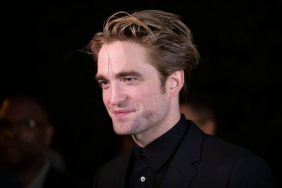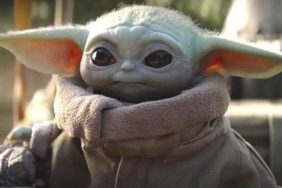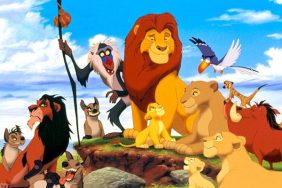Jon Favreau is perhaps one of the most important filmmakers of the past decade. Thanks to his work on 2008’s Iron Man, Favreau has essentially set the template for all of the superhero flicks to follow it. He has always had an open-eyed, practical view of genre filmmaking that has blended very human characters with a brisk, colorful visual style reminiscent of Steven Spielberg or Robert Zemeckis. This year, Favreau had yet another big hit with his remake of the 1967 animated version of The Jungle Book, a film which has just been nominated for Best Visual Effects at the Academy Awards.
Favreau’s version of The Jungle Book involved filming a live-action Mowgli (played by Neel Sethi) against a series of green screens, and then constructing a completely fabricated CGI world around him. All of the animal characters, and all of the settings were achieved using state-of-the-art special effects. It’s an impressive accomplishment.
Crave recently had a chance to talk with Mr. Favreau about The Jungle Book, his music choices, and his evolving views of special effects technology; it turns out that he used to be openly anti-all-CGI, and had to come to a new realization when it came to filmmaking.
Crave: I wanted to start with something you said back in 2005 while filming Zathura. You once said that films with too much CGI looked to artificial. Here in 2016, though, you have made a film that is almost entirely CGI. What changed?
Jon Favreau: I think, first of all, the technology had evolved quite a bit. Zathura was before Iron Man, and with Iron Man, I was very careful to have real things on the set. Like a real suit. Then there was a moment in Iron Man when we would shoot things you couldn’t do with a real suit. Like fly. And ILM had to build a suit that matched the real suit. I remember at one point – and I was very critical… I shouldn’t say “critical” – I was very skeptical about CGI at that time. Because I had seen a lot of movies where it wasn’t successful. I felt that it was successful in Jurassic Park, and then there was a whole slew of films in the following years where I found the CGI distracting and overused.
And so, when I was in the process of doing it myself, I told them very early on when I was working on Iron Man that I was very skeptical about this. And I remember at one point in the process, after we had filmed and were in post-production, I was giving very extensive notes on one of the CGI suits. And they had to interrupt me politely and say “That, actually, is the real suit. That shot’s the real suit.” And so it hit the point where I couldn’t tell the difference.
Now with metal, that’s a lot different that with animals. So at that point – whenever that came out, 2008 – that was around when they were doing a lot of work on Transformers as well, they had really come a long way with hard surfaces. Then I had seen films like Gravity and Dawn of the Planet of the Apes and Life of Pi, and I started to feel that maybe we’ve turned that corner. We’ve pushed through. So with CGI? The issue is people who don’t like CGI visual effects actually don’t like bad CGI. And the good stuff, they don’t even know is there. And that’s when I think it’s the best, when it recedes into the background and doesn’t draw attention to itself.
Hopefully, the experience of watching The Jungle Book is that of watching a movie that was really in the jungle filming real animals who just happen to talk. That’s the goal. And I think the fact that the story had worked out, and that [the CGI] doesn’t distract from the emotion and the humanity of the story to me is where it crossed that inflection point.
When creating these animals, do you create an animal first, or do you cast the actors first and design the face and look of the animal after the actor playing them?
That’s a give-and-take. For Scarlett Johansson, we didn’t change the look of the snake that much, but for Christopher Walken, we definitely changed King Louie a lot. I think it’s on a case-by-case basis. We want to adjust things to make it look… again, we didn’t want to exaggerate the animals enough that it took you out of the photo-real feeling, and into the animation feel.
Speaking of King Louie, this is the second film of yours to feature “I Wan’na Be Like You” on the soundtrack…
That’s a good catch there! Very well done. “I Wan’na Be Like You” is on the Swingers soundtrack. It’s never actually in the film, but the Big Bad Voodoo Daddy cover of it was included on the Swingers soundtrack. I think it [was a song] that introduced me to Louis Prima, and New Orleans jazz as a a kid. And I’ve certainly developed a real… it’s a genre of music that I really respond to and connect with. I really loved being down in New Orleans filming Chef, and we used a lot of New Orleans jazz in Chef. The jazz brass bands. And I realized that I was introduced to a lot of jazz in Sleeper, the Woody Allen film Sleeper. The music is Sleeper was done by… oh what is it called?
Dixieland?
No. There was a actual band, an actual musical group that did it. It was called The Preservation Hall Jazz Band! Woody Allen used The Preservation Hall Jazz Band on the soundtrack to Sleeper, and I was exposed to that while younger. Between that and The Jungle Book. And if you look at Swingers, you find there’s a lot of Big Bad Voodoo Daddy, and they were influenced by all of that, and that the swing movement owes its roots to the early jazz that came out of New Orleans. Anyway, sorry to go on about it [laugh]. It’s interesting to me, and exciting. Because I went down to New Orleans to record with Dr. John and Kermit Ruffins for “The Bare Necessities,” we had to record for that. And Bill Murray came down and sang as well. So it was really part of… I wanted to preserve that aspect.
I feel the 1967 Jungle Book is a very “jazzy” film. Not just because of Louis Prima, but it has a loose attitude to it. When making a new version, were you trying to capture that same tone, or did you have to start from scratch?
I think in general, the comedy of the original wasn’t going to play well with the live-action visual effects. It was a little too light, and definitely geared toward children, and we wanted to make something that felt like it fit. Like it could be an adventure film, and not just a children’s film. And so a lot of the comedy and the human had to be… we had to move away from the tone of the original. We tried to maintain some of the moments. It was also difficult, because in the case of King Louie, there are no orangutans in the jungles of India, but the gigantopithecus was a missing link that was huge that we’ve found remains of. This extinct species. That kind of opened up the door for what the action sequence could be that would take full advantage of the CGI. Of the CGI characters that we would have.
Was there ever a version of The Jungle Book that wasn’t a musical?
Yeah. When it was first being developed, Disney kind of wanted to go change it to skew a little more, you know, older? Like an action movie. And in developing the script, I felt there were a few touchstones that we needed to hit. As someone who grew up with the 1967 film, I felt there were certain images and moments we had to honor for the Disney fans to embrace it. So that was part of tonal line we had to walk, to make it still exciting, still feel like there are life-and-death stakes to it, but still have moments like “The Bare Necessities” where you can have those musical interludes and let the music inform the score. So that it did bring back a sense of connection with the original, even though this one was going to be different in many ways.
And was there ever a step in the development process where the film wasn’t going to be CGI? Was there ever a version with real animals?
No. I think that was from the first meeting with [Disney executive] Alan Horn, because he started referencing films like Life of Pi and Avatar, because it was going to be very difficult to… The animals clearly needed to be CGI, and once you’re doing all the animals, and using a digital environment with an actor that was the age Neel was, it just would have been very problematic to shoot him in the live environment on location. And so we made the decision pretty early on to do it this way, and we filmed it all in downtown Los Angeles.
What was your visual point of reference when creating a jungle from scratch?
So what we did was a lot of photo reference in various areas of India. We wanted to have all of the plant life and all of the animals feel authentic to the environment. Because the whole movie is a big illusion, because everything is being generated by artists, we wanted to try to keep it as accurate as possible and keep it authentic. Making something very fake look very real requires a lot of research and discipline in maintaining accuracy to what was really there. Because we knew were were going to making certain leaps. We made leaps with scale. We would exaggerate the scale of certain animals to make it feel more like the Disney film. And to have them talking and affecting the models of the animals that we were building, so we wanted to jungle environment to feel as accurate as we could.
What was the first record you bought with your own money?
The first record I remember buying with my own money… The first one I remember having was “The Candy Man” by Sammy Davis, Jr. It was a 45. And the one I remember buying in high school was “In Through the Out Door” by Led Zeppelin. I think that was the first rock album I bought.
Top Image: Disney
Witney Seibold is a longtime contributor to the CraveOnline Film Channel, and the co-host of The B-Movies Podcast and Canceled Too Soon. He also contributes to Legion of Leia and to Blumhouse. You can follow him on “The Twitter” at @WitneySeibold, where he is slowly losing his mind.







